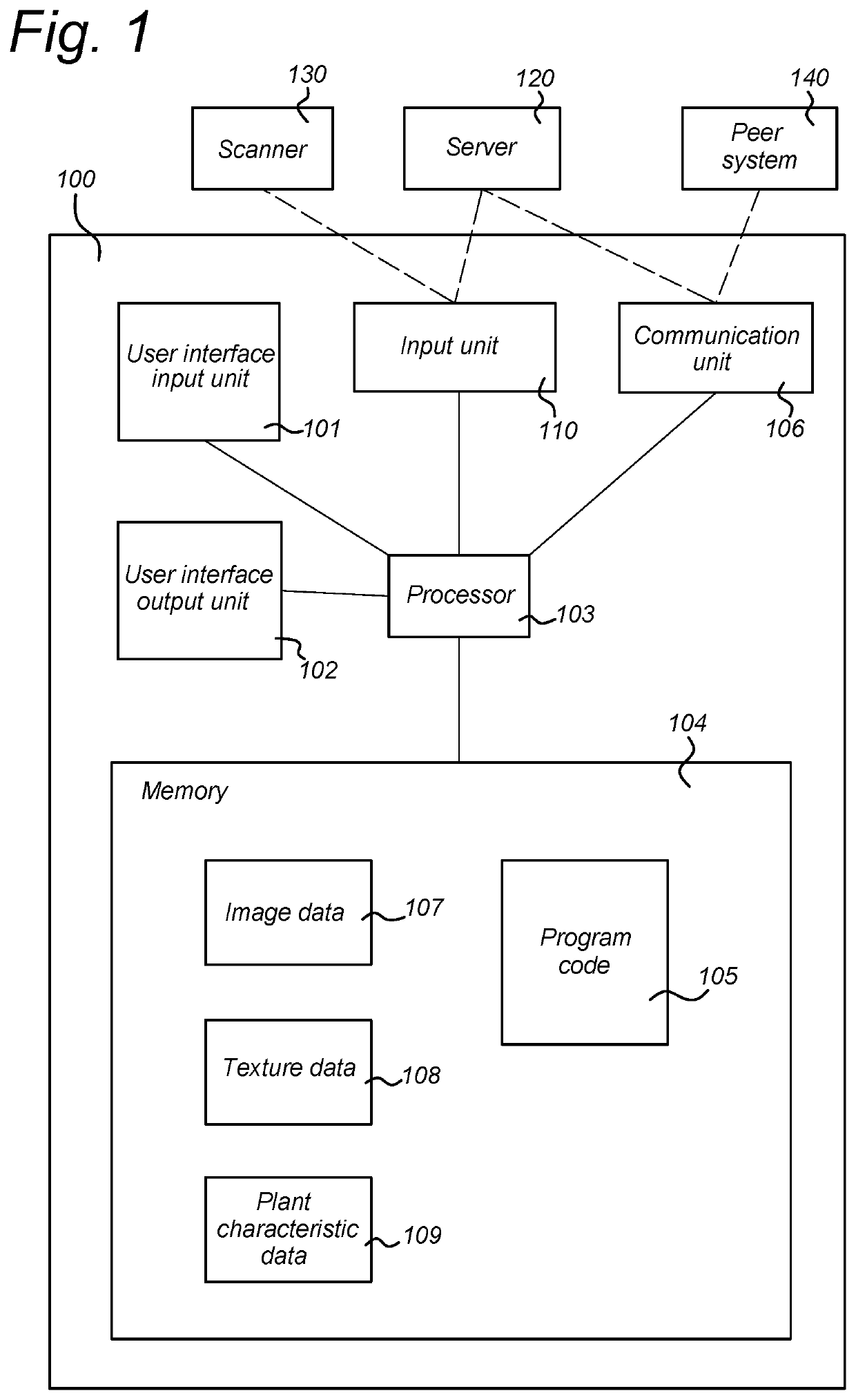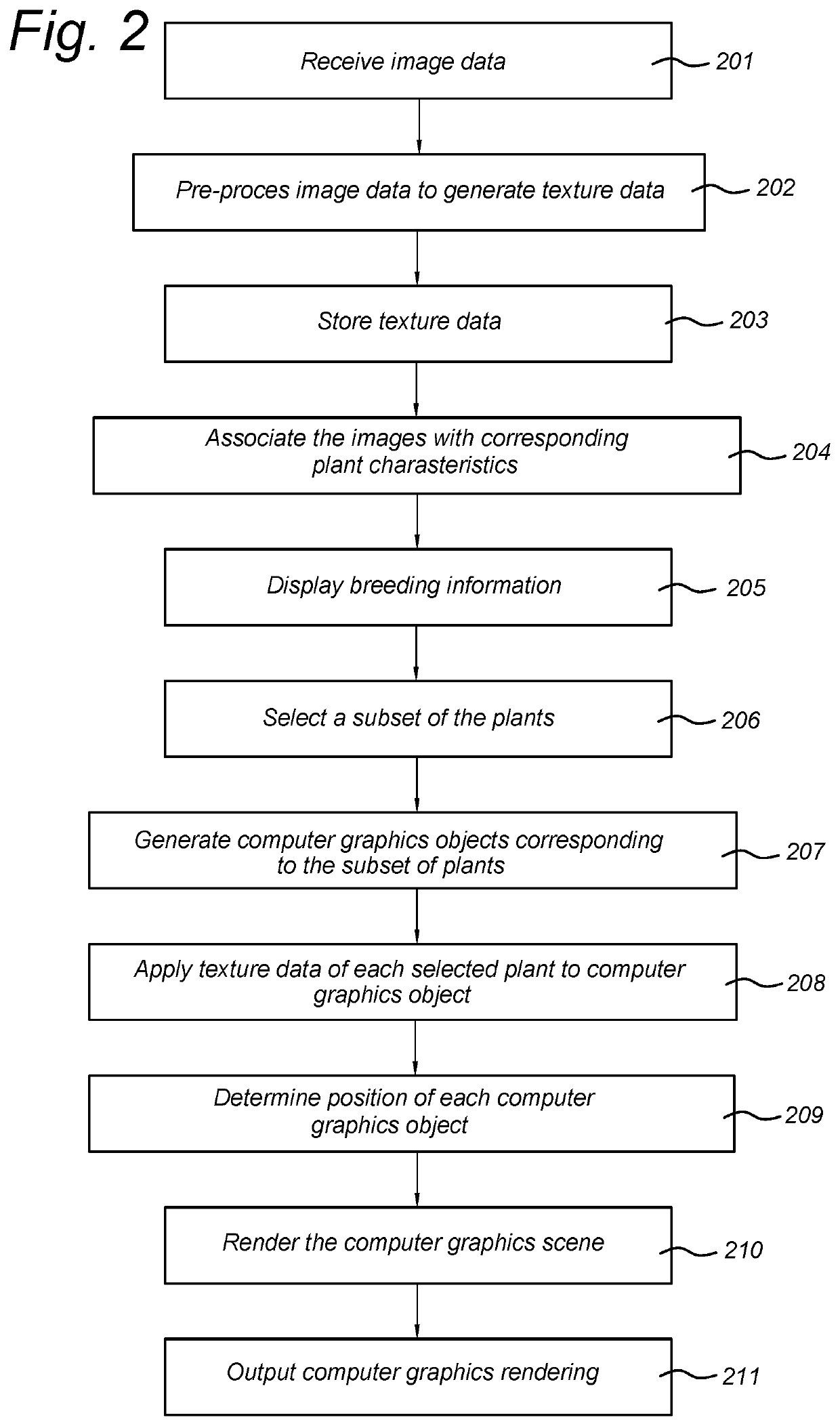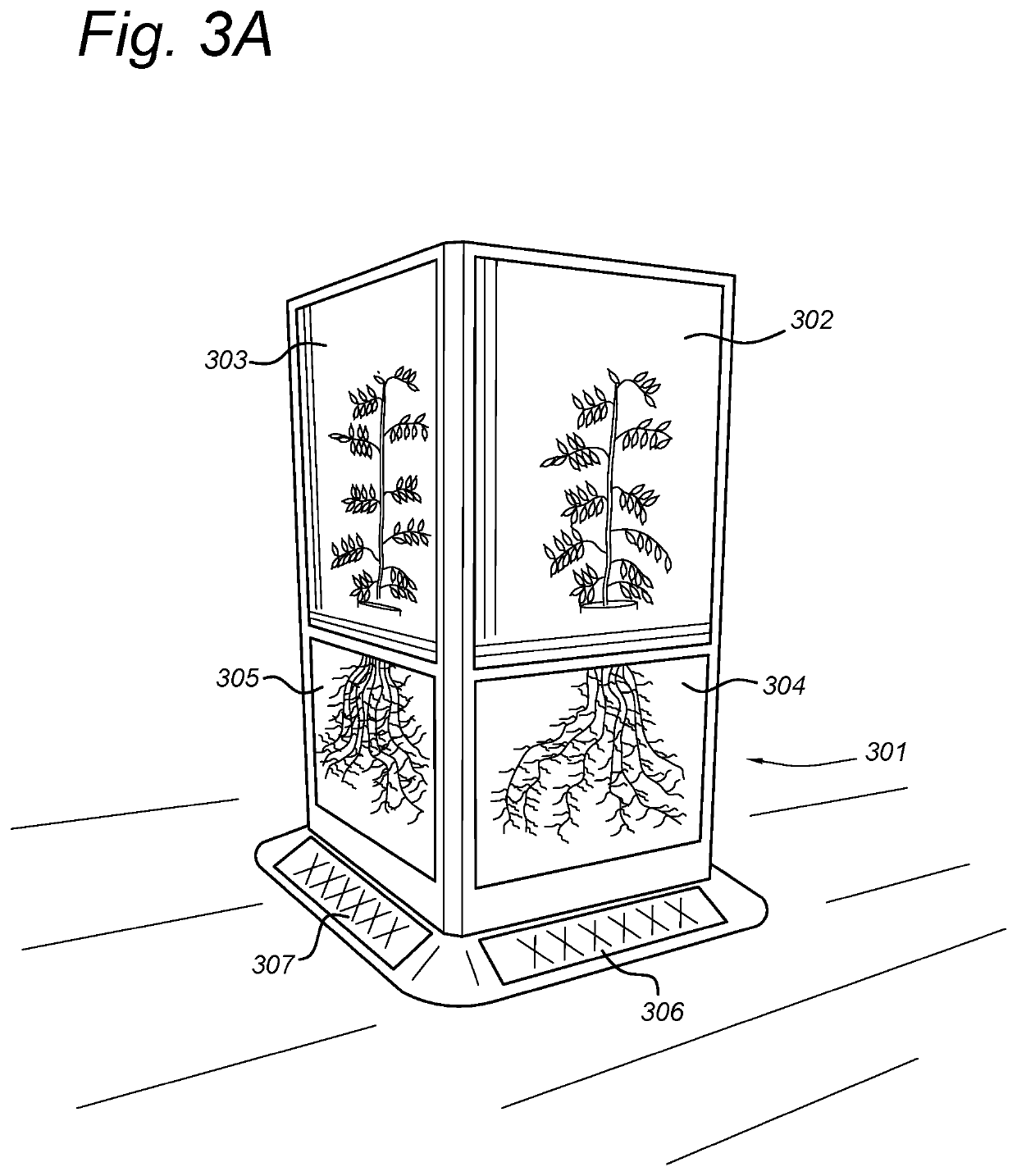Monitoring plants
- Summary
- Abstract
- Description
- Claims
- Application Information
AI Technical Summary
Benefits of technology
Problems solved by technology
Method used
Image
Examples
Embodiment Construction
[0048]Certain exemplary embodiments will be described in greater detail, with reference to the accompanying drawings.
[0049]The matters disclosed in the description, such as detailed construction and elements, are provided to assist in a comprehensive understanding of the exemplary embodiments. Accordingly, it is apparent that the exemplary embodiments can be carried out without those specifically defined matters. Also, well-known operations or structures are not described in detail, since they would obscure the description with unnecessary detail.
[0050]FIG. 1 illustrates an example implementation of a system 100 for monitoring plants. The system may be a computer system for example. The system may operate in cooperation with a scanning device (not shown), that is capable of scanning large amounts of plants individually. This scanning device may be configured to take photographs of each plant from different viewing directions. Separate photographs may be taken of the plant and its ro...
PUM
 Login to View More
Login to View More Abstract
Description
Claims
Application Information
 Login to View More
Login to View More - R&D
- Intellectual Property
- Life Sciences
- Materials
- Tech Scout
- Unparalleled Data Quality
- Higher Quality Content
- 60% Fewer Hallucinations
Browse by: Latest US Patents, China's latest patents, Technical Efficacy Thesaurus, Application Domain, Technology Topic, Popular Technical Reports.
© 2025 PatSnap. All rights reserved.Legal|Privacy policy|Modern Slavery Act Transparency Statement|Sitemap|About US| Contact US: help@patsnap.com



